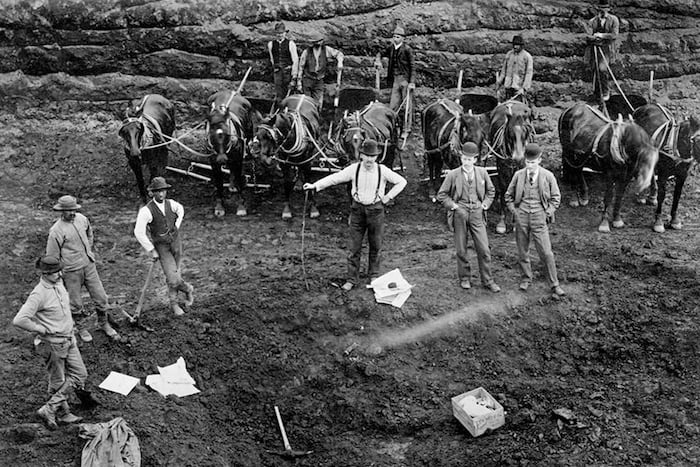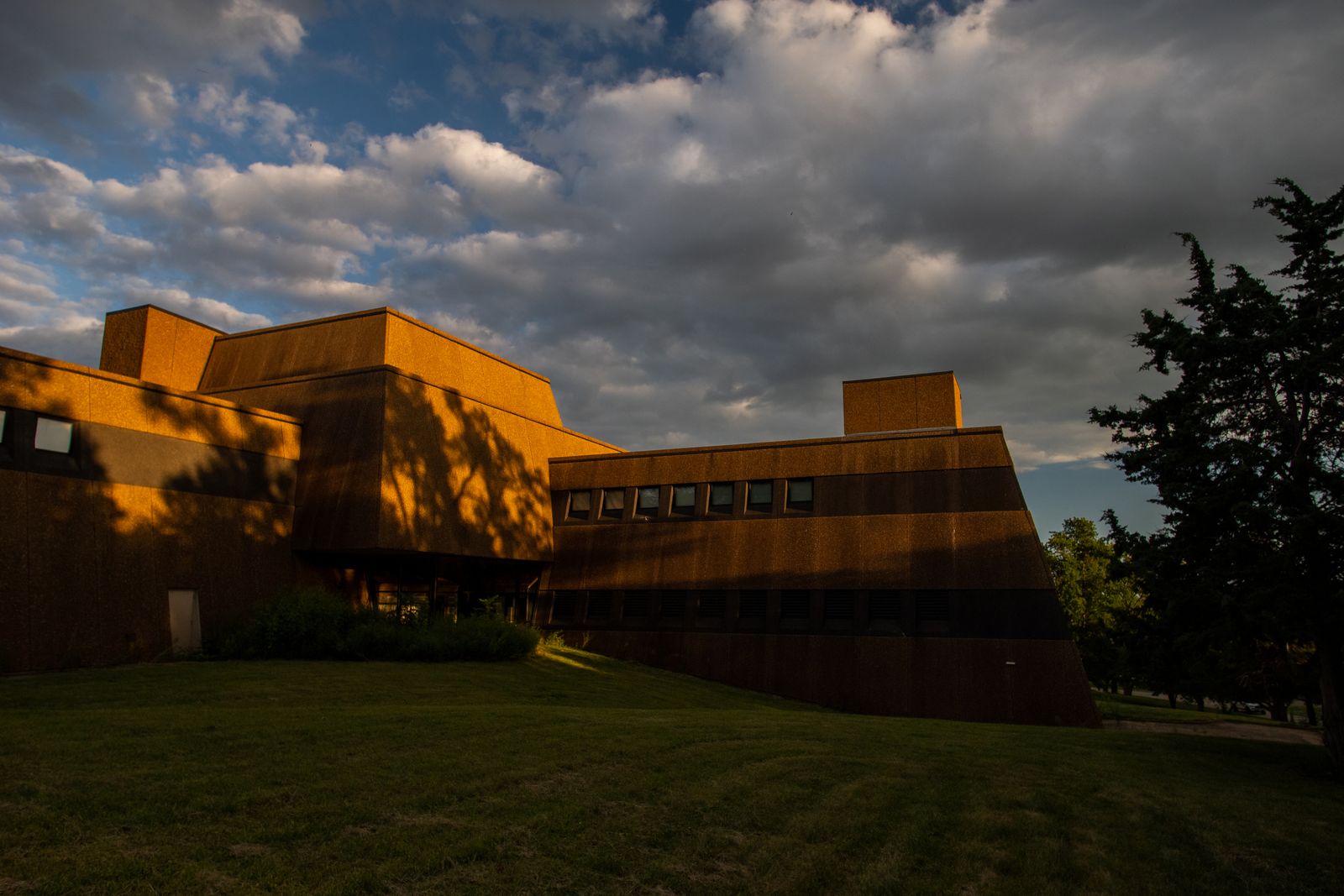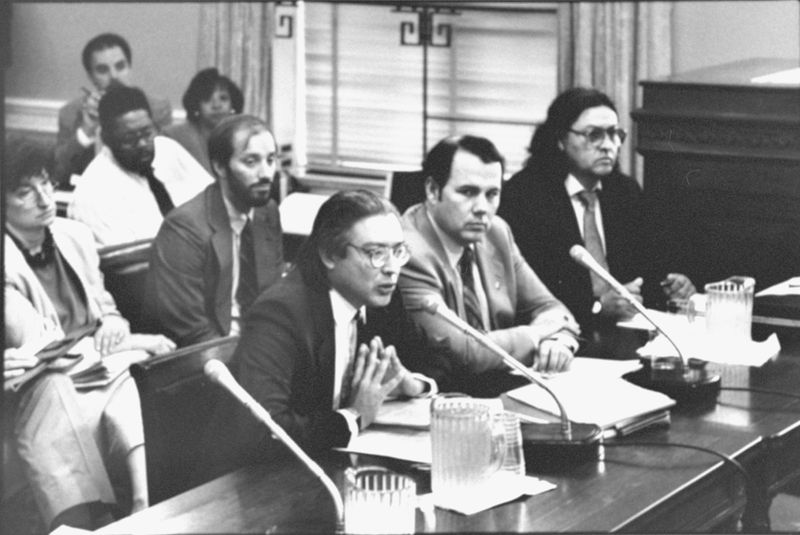Georgia
Institutions reported making 44% of the more than 2,300 Native American remains taken from Georgia available for return to tribes under NAGPRA.
There are 18 institutions located in Georgia that reported Native American remains taken from across the country.
| Institution | Remains Not Made Available for Return | Remains Made Available for Return | % of Remains Made Available for Return |
|---|---|---|---|
| University of Georgia, Department of Anthropology | 568 | 122 | 18% |
| Georgia Department of Natural Resources | 130 | 407 | 76% |
| U.S. Department of the Interior | 61 | 107 | 64% |
| Georgia Southern University | 23 | 0 | 0% |
| Augusta Museum of History | 22 | 0 | 0% |
| Columbus Museum | 10 | 68 | 87% |
| Georgia Power | 1 | 0 | 0% |
| U.S. Department of Agriculture | 1 | 2 | 67% |
| U.S. Department of Defense | 1 | 32 | 97% |
| Augusta State University | 0 | 2 | 100% |
| Columbus State University | 0 | 28 | 100% |
| Dalton State College | 0 | 1 | 100% |
| Emory University, Michael C. Carlos Museum | 0 | 2 | 100% |
| Fernbank Museum of Natural History | 0 | 217 | 100% |
| Georgia Department of Transportation | 0 | 3 | 100% |
| Georgia State University | 0 | 23 | 100% |
| Historic Westville | 0 | 4 | 100% |
| University of West Georgia | 0 | 2 | 100% |
There are 39 institutions that reported Native American remains taken from Georgia.
| Institution | Remains Not Made Available for Return | Remains Made Available for Return | % of Remains Made Available for Return |
|---|---|---|---|
| University of Georgia, Department of Anthropology | 558 | 121 | 18% |
| U.S. Department of Defense | 232 | 49 | 17% |
| U.S. Department of the Interior | 136 | 85 | 38% |
| Georgia Department of Natural Resources | 130 | 407 | 76% |
| University of Florida, Florida Museum of Natural History | 106 | 0 | 0% |
| Harvard University | 56 | 10 | 15% |
| Georgia Southern University | 23 | 0 | 0% |
| Augusta Museum of History | 21 | 0 | 0% |
| University of North Carolina at Chapel Hill | 13 | 0 | 0% |
| University of Alabama Museums | 9 | 0 | 0% |
| University of Pennsylvania Museum of Archaeology and Anthropology | 7 | 3 | 30% |
| University of Tennessee, Knoxville | 7 | 0 | 0% |
| American Museum of Natural History | 5 | 1 | 17% |
| Indiana University | 4 | 0 | 0% |
| Robert S. Peabody Institute of Archaeology, Phillips Academy | 3 | 105 | 97% |
| University of Michigan Museum of Anthropology | 3 | 0 | 0% |
| Auburn University | 2 | 0 | 0% |
| Dartmouth College, Hood Museum of Art | 2 | 0 | 0% |
| Mississippi State University, Cobb Institute of Archaeology | 2 | 0 | 0% |
| Charleston Museum | 1 | 0 | 0% |
| Columbus Museum | 1 | 0 | 0% |
| Georgia Power | 1 | 0 | 0% |
| Nassau County Department of Parks and Recreation | 1 | 0 | 0% |
| Rochester Museum and Science Center | 1 | 0 | 0% |
| Spratt-Mead Museum | 1 | 0 | 0% |
| U.S. Department of Agriculture | 1 | 2 | 67% |
| University of Indianapolis, Archeology and Forensics Lab | 1 | 0 | 0% |
| University of Texas at San Antonio, Center for Archaeological Research | 1 | 0 | 0% |
| West Virginia Department of Arts, Culture and History | 1 | 0 | 0% |
| Augusta State University | 0 | 2 | 100% |
| Colgate University, Longyear Museum of Anthropology | 0 | 1 | 100% |
| Emory University, Michael C. Carlos Museum | 0 | 2 | 100% |
| Fernbank Museum of Natural History | 0 | 217 | 100% |
| Field Museum | 0 | 3 | 100% |
| Georgia Department of Transportation | 0 | 3 | 100% |
| Georgia State University | 0 | 15 | 100% |
| New York University, College of Dentistry | 0 | 1 | 100% |
| University of California, Riverside | 0 | 1 | 100% |
| University of West Georgia | 0 | 2 | 100% |
Institutions made Native American remains taken from Georgia available for return to 19 tribes.
| Tribe | Remains Made Available for Return to Tribe |
|---|---|
| Muscogee (Creek) Nation | 1,023 |
| Thlopthlocco Tribal Town | 975 |
| Poarch Band of Creek Indians | 872 |
| Alabama-Quassarte Tribal Town, Oklahoma | 843 |
| Kialegee Tribal Town | 748 |
| The Seminole Nation of Oklahoma | 434 |
| Seminole Tribe of Florida | 433 |
| Miccosukee Tribe of Indians | 372 |
| United Keetoowah Band of Cherokee Indians in Oklahoma | 94 |
| Alabama-Coushatta Tribe of Texas | 93 |
| Eastern Band of Cherokee Indians | 93 |
| Cherokee Nation | 92 |
| Coushatta Tribe of Louisiana | 92 |
| Shawnee Tribe | 17 |
| Chickasaw Nation | 10 |
| Catawba Indian Nation | 6 |
| Choctaw Nation of Oklahoma | 2 |
| Jena Band of Choctaw Indians | 1 |
| Mississippi Band of Choctaw Indians | 1 |
Institutions reported Native American remains taken from 52 counties in Georgia.
| County | Remains Taken From County Not Made Available for Return | Remains Made Available for Return | % of Remains Made Available for Return |
|---|---|---|---|
| Floyd County | 267 | 0 | 0% |
| Murray County | 186 | 10 | 5% |
| Glynn County | 182 | 0 | 0% |
| Early County | 87 | 0 | 0% |
| Chatham County | 82 | 8 | 9% |
| Columbia County | 78 | 9 | 10% |
| Bibb County | 65 | 34 | 34% |
| Greene County | 61 | 3 | 5% |
| McIntosh County | 54 | 8 | 13% |
| Bryan County | 43 | 1 | 2% |
| Bartow County | 30 | 565 | 95% |
| Morgan County | 25 | 0 | 0% |
| Decatur County | 23 | 0 | 0% |
| Richmond County | 21 | 3 | 13% |
| Cobb County | 13 | 0 | 0% |
| Cherokee County | 12 | 0 | 0% |
| Dade County | 9 | 17 | 65% |
| Glascock County | 9 | 0 | 0% |
| Hancock County | 7 | 0 | 0% |
| Telfair County | 7 | 0 | 0% |
| Baldwin County | 6 | 0 | 0% |
| Clarke County | 5 | 1 | 17% |
| Crisp County | 5 | 0 | 0% |
| Dodge County | 4 | 0 | 0% |
| Troup County | 4 | 23 | 85% |
| Wheeler County | 4 | 12 | 75% |
| Chattahoochee County | 3 | 7 | 70% |
| Effingham County | 3 | 0 | 0% |
| Camden County | 2 | 10 | 83% |
| Clayton County | 2 | 0 | 0% |
| Henry County | 2 | 0 | 0% |
| Screven County | 2 | 0 | 0% |
| Burke County | 1 | 0 | 0% |
| Charlton County | 1 | 0 | 0% |
| Coffee County | 1 | 0 | 0% |
| Elbert County | 1 | 0 | 0% |
| Harris County | 1 | 0 | 0% |
| Jenkins County | 1 | 0 | 0% |
| Lee County | 1 | 0 | 0% |
| Liberty County | 1 | 217 | 100% |
| Monroe County | 1 | 0 | 0% |
| Muscogee County | 1 | 3 | 75% |
| Pierce County | 1 | 0 | 0% |
| Putnam County | 1 | 0 | 0% |
| Washington County | 1 | 0 | 0% |
| Wayne County | 1 | 0 | 0% |
| Douglas County | 0 | 2 | 100% |
| Gilmer County | 0 | 2 | 100% |
| Gordon County | 0 | 42 | 100% |
| Jackson County | 0 | 1 | 100% |
| Laurens County | 0 | 34 | 100% |
| Long County | 0 | 5 | 100% |
Know how an institution is handling repatriation? Have a personal story to share? We'd like to hear from you.
Watch an informational webinar with our reporters.
This tool presents a dataset maintained by the National Park Service containing all the Native American human remains and associated funerary objects that institutions have reported to the federal government under the Native American Graves Protection and Repatriation Act. The dataset includes information about the state and county where remains and objects were taken from, which institutions hold them and whether they have been made available for return to tribes.
The data is self-reported by institutions. The amount of unrepatriated Native American remains reported by institutions is a minimum estimate of individuals and institutions frequently adjust these numbers when they reinventory groups of remains. Some institutions that are subject to NAGPRA have also entirely failed to report the remains in their possession. As a result, the numbers provided are best taken as estimates. The actual number and geographic scope of what’s held by publicly funded institutions is larger than what is presently documented.
ProPublica supplemented this dataset with information about cultural affiliation and disposition to specific tribes by systematically parsing the text of Notices of Inventory Completion published in the Federal Register. An additional dataset from the Department of Housing and Urban Development, the Tribal Directory Assessment Tool, was used for the section on remains not made available for return from counties that each tribe has indicated interest in to the federal government.
Institution location and tribal headquarters location information was provided by National NAGPRA. The location of some groups that are not federally recognized was provided through research by ProPublica.
Institutions that are part of a larger entity are grouped. (For example, the Mesa Verde National Park is part of the U.S. Department of the Interior.)
Institutions that have not submitted information to the federal government are not listed. The Smithsonian Institution is not listed because its repatriation process falls under the National Museum of the American Indian Act and it is not required to publicly report its holdings with the same detail as institutions subject to NAGPRA.
If you work for an institution and would like to provide comment on your institution’s repatriation efforts, please email [email protected]. If you think the data is incorrect or have a data request, please get in touch. We are aware of some issues with the accuracy of location information and tribes mistakenly being identified for disposition of Native American remains in published notices.
If you want to share something else with ProPublica, we’d like to hear from you.
If you have questions about implementing or complying with the Native American Graves Protection and Repatriation Act, get in touch with National NAGPRA or the NAGPRA Community of Practice.
We use the word “tribes” to refer to all groups that institutions made Native American remains available to under NAGPRA. This includes tribes, nations, bands, pueblos, communities, Native Alaskan villages, Native Hawaiian organizations and non-federally recognized groups.
Data sources from Department of the Interior, National Park Service, National NAGPRA Program, the Federal Register, Department of Housing and Development, Tribal Directory Assessment Tool


